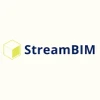The construction industry wastes nearly $1.6 trillion globally every year due to inefficiencies. What if we tell you that about half of this amount could be slashed by making use of smart technology like BIM?
For the unversed, BIM, short for Building Information Modeling, is a software solution used to design, manage, and coordinate building projects using 3D models and data.
Now, while this modeling tool is the holy grail of project design and coordination, its licensing often makes engineers break into a sweat. Well, not anymore. With a range of free BIM software for civil engineering available in the market, you are no longer required to burn a hole in your pocket to acquire one.
Let’s explore all the leading options you can choose from to make design, coordination, and construction smarter, simpler, and best of all, free, shall we?
What is Free BIM Software for Civil Engineering?
Free BIM software for civil engineering, as the name suggests, refers to software solutions that help civil engineers create detailed 3D models of buildings and infrastructure without paying expensive license fees.
These tools support BIM in design processes by combining geometry, material properties, schedule data, and cost information, making them non-negotiable for modern infrastructure projects.
Free BIM building software, as such, help users build intelligent BIM models, run simulations, collaborate across teams, and manage construction workflows, all affordably.
The Top 7 Free BIM Software for Civil Engineering in 2025
All the leading free BIM civil engineering software are listed below for your convenience. While some of them are open-source platforms or basic viewers, others act as cloud-based collaboration hubs or even free educational licenses, making BIM in design accessible to students, professionals, and small firms alike.
| Software | Platform | Key Features & Best Use Case |
|---|---|---|
| FreeCAD | Win/Mac/Linux | Parametric, modular, IFC support Small projects, learning |
| Blender BIM | Win/Mac/Linux | IFC authoring, parametric BIM Detailed design, architectural |
| Autodesk Revit | Windows | Parametric families, cloud BIM Academic, professional training |
| usBIM | Web | IFC viewing, editing, collaboration Remote teams, online projects |
| BIMvision | Windows | Fast IFC view, clash detection Quick model checks |
| Dalux BIM Viewer | iOS/Android/Win | Mobile BIM viewing, issue tracking Field and site engineers |
| Trimble Connect | Web | Model sharing, task tracking Distributed project teams |
Top BIM Software: Features, Platforms & Uses
Explore the best BIM tools for design, collaboration, and project management across different platforms.
1. FreeCAD
The FreeCAD is an open-source, parametric 3D modeler with a BIM workbench designed for civil engineers and architects who want a free, customizable BIM modeling environment.
FreeCAD is developed by an international community under the LGPL open-source license, ensuring the software remains free and modifiable by anyone.
Key Features of FreeCAD:
- Supports parametric modeling for easy updates
- Facilitates BIM workflows with IFC support
- Offers modular design with many plugins
- Runs cross-platform on Windows, macOS, and Linux
- Supports multiple file formats like STEP, STL, DXF, and IFC
- Enables scripting with Python for automation
- Provides basic visualization tools using Coin3D
- Supports external rendering engines like Lux Core Render and Blender

FreeCAD
Starting Price
Price on Request
Pros
- Is fully open source with no license fees
- Is highly customizable via plugins and scripts
- Is beginner-friendly for small projects
- Offers strong community support and documentation
Cons
- Its user interface feels basic compared to paid tools
- Lacks advanced BIM features like clash detection
- Its rendering capability is limited without external tools
- Has a steep learning curve for new users
2. BlenderBIM
BlenderBIM is an open-source BIM addon for Blender, a powerful 3D modeling and animation platform. It brings BIM data management and visualization to Blender’s creative environment, making it ideal for engineers needing both precision and flexibility.
Distributed under the GNU GPL license, BlenderBIM is entirely free, supported by a passionate open-source developer community.

Blender
Starting Price
Price on Request
Key Features of BlenderBIM:
- Supports full IFC authoring and editing for openBIM workflows
- Facilitates parametric modeling using Blender’s advanced 3D tools
- Enables BIM collaboration with open-source standards and Git-like version control
- Provides high-quality rendering with Cycles and Eevee engines
- Supports drawing generation, scheduling, and costing directly from IFC data
- Allows real-time visualization and VR integration for immersive design reviews
- Offers advanced geometry editing and animation tools for construction sequencing
Pros
- Combines modeling and BIM workflows in one tool
- Is open-source and free with strong community support
- Is great for visualization and animation
- Works on all major platforms
Cons
- Isn’t very beginner friendly
- Offers limited project management tools
- Needs plugins for full BIM features
3. Autodesk Revit (Educational License)
Autodesk Revit is the industry-leading BIM tool, with comprehensive modeling and documentation capabilities essential to civil engineering. It provides free access through its Education Community, empowering students and educators to hone professional BIM skills without cost.
Key Features of Autodesk Revit:
- Supports parametric modeling for architecture, structure, and MEP
- Automates 2D documentation linked to 3D models
- Facilitates cloud collaboration via BIM 360 and ACC
- Provides a large BIM component library for quick modeling
- Enables high-quality rendering with built-in and cloud tools
- Supports analysis tools for energy, daylight, and carbon impact
- Allows real-time team collaboration with work sharing tools
Pros
- Offers integrated BIM workflows across disciplines
- Is widely used in industry and education
- Provides advanced tools for design, coordination, and documentation
- Supports sustainability analysis and cost estimation
Cons
- Is free only for education; paid license needed for commercial use
- Requires strong hardware for smooth performance
- Has a steep learning curve for new users
- Subscription-based pricing may be costly for small firms
4. usBIM
usBIM is an Italian cloud-based BIM tool platform offering IFC viewing, editing, and collaboration in a free tier tailored for civil engineering teams. The tool also offers upgrades for enhanced features.
Key Features of usBIM:
- Supports online IFC viewing and editing with no installation
- Facilitates real-time collaboration and version control
- Integrates with multiple formats like IFC, DWG, DXF, PDF, and Revit
- Provides cloud storage accessible from any device
- Offers clash detection, scheduling, and model validation via plugins
- Includes chat, video calls, and team coordination tools
Pros
- Requires zero-install setup with browser access
- Supports easy collaboration on BIM models in real time
- Provides a user-friendly interface with multi-language support
- Its free version comes with basic tools and 10 GB storage
Cons
- Needs stable internet for full functionality
- Its advanced features and extra storage require paid plans
- Is not ideal for detailed 3D modeling or complex BIM tasks
- Limited mobile compatibility and slower performance on large models
5. BIMvision
BIMvision is a free Windows-based IFC viewer designed for quick and lightweight model inspection and clash detection. It’s especially useful for quick model checks, measurements, and coordination tasks, but only for viewing, not editing or creating models.
Key Features of BIMvision:
- Supports smooth IFC model navigation
- Facilitates clash detection with plugin support
- Provides measurement tools for quick checks
- Allows plugin integration for added features
- Supports multiple IFC versions including IFC 2×3 and IFC4
Pros
- Offers a simple and fast interface for quick use
- Completely free for viewing IFC files
- Is useful for site coordination and model review
- Supports plugin-based customization
Cons
- No model creation or editing features
- Works only on Windows platform
- Does not support cloud collaboration
6. Dalux BIM Viewer
Dalux BIM Viewer is a mobile and desktop BIM modeling software optimized for construction site use, offering free BIM viewing and issue tracking to support on-site workflows. Its free version supports basic workflows; however, one would need to switch to paid plans to avail its advanced features.
Key Features of Dalux BIM Viewer:
- Supports 3D BIM viewing on mobile and desktop
- Facilitates issue tracking linked to model locations
- Enables offline access for mobile users
- Provides real-time notifications and team communication
- Includes plugins for Revit, ArchiCAD, Tekla, and Navisworks
- Allows clash import from Solibri and Navisworks
Pros
- Is great for field engineers tracking site progress
- Is mobile-friendly with offline mode
- Offers a free basic version for individuals and small teams
- Offers fast performance even with large models
- Has a user-friendly interface with easy navigation
Cons
- Has no modeling or editing tools
- Its advanced features like analytics need paid plans
- Its Desktop version is less flexible than mobile
- Offers limited customization and workflow flexibility
7. Trimble Connect
Trimble Connect is a cloud-based collaboration platform allowing civil engineers and project teams to share, comment on, and manage BIM models and project data seamlessly.
It offers a free version with basic features like model viewing, markup, and collaboration. If users need more storage or advanced tools (like clash detection or task automation), they can upgrade to paid plans.
Key Features of Trimble Connect:
- Supports secure cloud storage with version control
- Facilitates 3D model markup and real-time collaboration
- Enables task management for tracking workflows
- Supports over 45 file formats including IFC, RVT, DWG, and NWD
- Integrates with tools like SketchUp, Tekla, and Revit
Pros
- Simplifies team communication across locations
- Is accessible via web, desktop, and mobile apps
- Free tier available with 10 GB storage and basic tools
- Includes clash detection and offline access for some features
Cons
- Its free plan has limited storage and features
- Requires internet for full functionality
- Does not offer modeling tools; is used mainly for coordination
- Advanced BIM tools need paid subscription
Conclusion
Free BIM software for civil engineering acts as a bridge between cutting-edge technology and budget constraints. With the aforementioned seven champions, civil engineers can thus design structures and coordinate efficiently without sacrificing budget or quality.
For only when you embrace the wonders of BIM modeling software, would you be able to create infrastructure projects that are smarter and more environmentally aware!
Yashika Aneja is a Senior Content Writer at Techjockey, with over 5 years of experience in content creation and management. From writing about normal everyday affairs to profound fact-based stories on wide-ranging themes, including environment, technology, education, politics, social media, travel, lifestyle so on and so forth, she... Read more





























